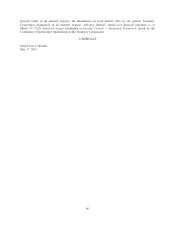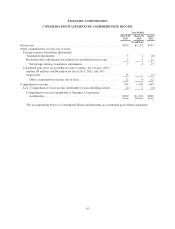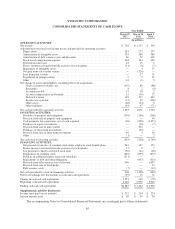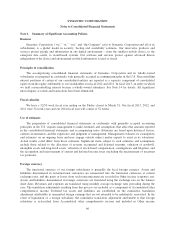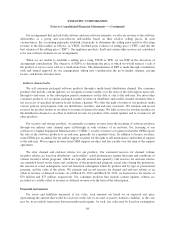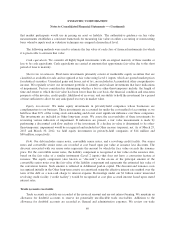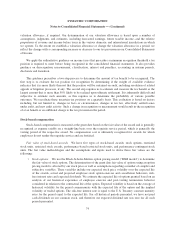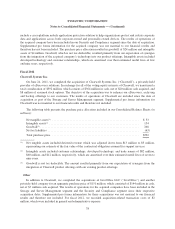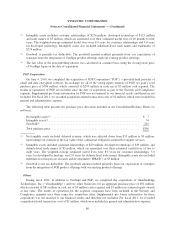Symantec 2013 Annual Report Download - page 168
Download and view the complete annual report
Please find page 168 of the 2013 Symantec annual report below. You can navigate through the pages in the report by either clicking on the pages listed below, or by using the keyword search tool below to find specific information within the annual report.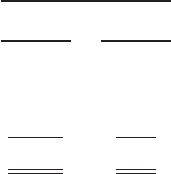
SYMANTEC CORPORATION
Notes to Consolidated Financial Statements — (Continued)
receivables by aging category to identify specific customers with known disputes or collectability issues. In
addition, we maintain an allowance for all other receivables not included in the specific reserve by applying
specific percentages of projected uncollectible receivables to the various aging categories. In determining these
percentages, we analyze our historical collection experience and current economic trends. We exercise judgment
when determining the adequacy of these reserves as we evaluate historical bad debt trends, general economic
conditions in the U.S. and internationally, and changes in customer financial conditions. We also offset deferred
revenue against accounts receivable when channel inventories are in excess of specified levels and for
transactions where collection of a receivable is not considered probable.
The following table summarizes trade accounts receivable, net of allowances and reserves, for the periods
presented:
As of
March 29,
2013
March 30,
2012
(In millions)
Trade accounts receivable .......................................... $1,054 $962
Less: allowance for doubtful accounts ................................ (5) (5)
Less: reserve for product returns ..................................... (18) (17)
Trade accounts receivable, net .................................... $1,031 $940
Inventories
Inventories are carried at the lower of cost or market. Cost is principally determined using the first-in, first-
out method. Adjustments to reduce the cost of inventory to its net realizable value are made, if required, for
estimated excess, obsolescence or impaired balances. Inventory predominantly consists of deferred costs of
revenue and finished goods. Deferred costs of revenue were $15 million as of March 29, 2013 and $20 million as
of March 30, 2012. Finished goods were $11 million as of March 29, 2013 and $11 million as of March 30, 2012.
Property and equipment
Property, equipment, and leasehold improvements are stated at cost, net of accumulated depreciation. We
capitalize costs incurred during the application development stage related to the development of internal use
software and enterprise cloud computing services. We expense costs incurred related to the planning and post-
implementation phases of development as incurred. Depreciation is provided on a straight-line basis over the
estimated useful lives of the related assets. Buildings are depreciated over 20 to 30 years. Leasehold
improvements are depreciated over the lesser of the life of the improvement or the initial lease term. Computer
hardware and software, and office furniture and equipment are depreciated over three to five years.
70


